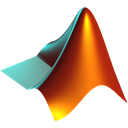Unlocking Your Potential: The Best python(x,y) Alternatives for Scientific Computing
Python(x,y) has long been a go-to free scientific and engineering development software, offering a robust environment for numerical computations, data analysis, and visualization. Built on Python, Qt, and Spyder, it enables everything from interactive calculations and symbolic math to sophisticated application development and parallel computing. However, for various reasons—be it specific feature needs, platform preferences, or a desire for a different ecosystem—many users seek powerful python(x,y) alternative options. This guide explores some of the top contenders that can meet and even exceed your scientific computing demands.
Top python(x,y) Alternatives
Whether you're looking for open-source flexibility, commercial support, or a specialized tool, these alternatives offer diverse capabilities to enhance your scientific and engineering workflows.

GNU Octave
GNU Octave is a powerful, free, and open-source programming language for numerical computations, largely compatible with MATLAB. It's an excellent python(x,y) alternative for users seeking a familiar syntax and robust numerical capabilities. Available on Mac, Windows, Linux, and BSD, it includes features like ANOVA testing, making it versatile for statistical analysis.

GeoGebra
GeoGebra is a free and open-source dynamic mathematics software, ideal for learning and teaching. While not a direct scientific programming environment like python(x,y), its robust graphing calculator, algebra capabilities, spreadsheets, and ability to export to HTML, LaTeX, and SVG make it a fantastic tool for visualization and mathematical exploration. It's available across a wide range of platforms including Mac, Windows, Linux, Web, Android, iPhone, Android Tablet, and iPad.

MATLAB
MATLAB is a commercial enterprise-class computing environment and programming language renowned for numerical computation. For those who appreciate the robust features of python(x,y) but need industry-standard tools and extensive libraries, MATLAB offers Simulink, batch plotting, and an embedded debugger. It's available on Mac, Windows, Linux, Web, Android, iPhone, and iPad.

Anaconda
Anaconda is a completely free and open-source enterprise-ready Python distribution, specifically designed for large-scale data processing, predictive analytics, and scientific computing. It comes bundled with over 100 of the most popular Python packages, making it an excellent all-in-one python(x,y) alternative. Available on Mac, Windows, and Linux, it provides PowerShell Scripting and extensive Python support.

Sage
Sage is a free, open-source mathematics software system licensed under the GPL. It intelligently combines the power of numerous existing open-source packages into a cohesive Python-based environment, offering a robust python(x,y) alternative for symbolic computation. It runs on Mac, Windows, Linux, and Web platforms.

Mathematica
Mathematica is a definitive commercial technical computing system covering machine learning, neural networks, data science, and advanced visualizations. As a comprehensive python(x,y) alternative, it provides features like symbolic computation, calculus solving, constructive geometry, equation solving, a graphing calculator, algebra, and graphical components. It's available on Mac, Windows, Linux, and Web.

SciPy & Numpy
SciPy and NumPy are cornerstone open-source Python libraries for mathematics, science, and engineering. While not an all-in-one distribution like python(x,y), they form the bedrock for most scientific Python applications, offering fundamental numerical operations and scientific algorithms. They are free, open-source, and available on Mac, Windows, and Linux, making them essential components for any Python-based scientific workflow.

Scilab
Scilab is a free and open-source scientific software package for numerical computations, providing a powerful computing environment for engineering and scientific applications. Its capabilities for numerical analysis and strong mathematical function library make it a robust python(x,y) alternative, especially for those familiar with MATLAB-like syntax. It is available on Mac, Windows, and Linux.

Matplotlib
Matplotlib is a free and open-source Python 2D plotting library that produces publication-quality figures across various hardcopy formats and interactive environments. While python(x,y) includes plotting, Matplotlib offers dedicated, highly customizable visualization capabilities, making it an essential python(x,y) alternative or complementary tool for data visualization. It is cross-platform (Mac, Windows, Linux, Web) and integrates seamlessly with Python interpreters.

Julia
Julia is a high-level, high-performance dynamic programming language specifically designed for technical computing, with syntax familiar to users of other technical computing environments. As a powerful python(x,y) alternative, Julia offers automatic JIT compilation on code change, is a compiled language, and excels in parallel computing, providing significant speed advantages for computationally intensive tasks. It's free, open-source, and available on Mac, Windows, and Linux.
Choosing the best python(x,y) alternative depends heavily on your specific project requirements, budget, and desired feature set. Whether you prioritize open-source flexibility, extensive libraries, or high-performance computing, the options above provide excellent pathways to continue your scientific and engineering endeavors.